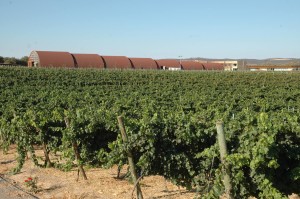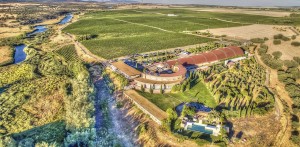On Tuesday, August 6, 2019 the EU-approved Vino de Pago el Vicario protected designation of origin/PDO wine of Spain came into force.
The newly-registered Pago is located in the comunidad autónoma of Castilla-La Mancha, and is surrounded by the larger La Mancha DO. The registration of the Vino de Pago el Vicario makes a total of 19 Pagos registered in Spain (of which 12 are located in the region of Castilla-La Mancha). According to the fresh-off-the-presses documentation, the details concerning the Vino de Pago el Vicario PDO includes the following:
Location: 86 parcels are approved for use in the wines of the Vino de Pago El Vicario; all of these are located in the municipality of ciudad Real (Castilla–La Mancha, Spain).
Allowed grape varieties: Tempranillo, Syrah, Garnacha Tinta, Cabernet Sauvignon, Graciano, Petit Verdot Merlot, Chardonnay, Sauvignon Blanc
Types/styles of wine:
- Vino blanco parcialmente fermentado en barrica (partially barrel-fermented white wine)
- Produced from Chardonnay and/or Sauvignon Blanc, macerated on the grape skins for 12 to 24 hours prior to pressing; small amounts of Tempranillo and/or Garnacha Tinta may be used as well
- At least 15% of the must is barrel-fermented and allowed to rest on the lees (in the barrels) for 4 to 8 months. Barrels must be European Oak and no older than two years of age. The remainder of the must may be fermented in stainless steel.
- Vino blanco de uva tinta (white wine from black grapes/blanc de noir)
- Produced using Tempranillo and/or Garnacha Tinta
- Fermented in stainless steel
- Vino rosado (rosé)
- Produced using Petit Verdot
- Stainless steel fermentation
- Vino blanco semidulce (semi-sweet white wine)
- Produced from Chardonnay and/or Sauvignon Blanc, macerated on the grape skins for 12 to 24 hours prior to pressing
- Fermented in stainless steel
- 1.2% to 4.5% residual sugar
- Vinos tintos elaborados con mezcla de variedades autóctonas y foráneas (blended red wines made with indigenous and international varieties)
- Produced using Tempranillo, Graciano, Garnacha Tinta, Cabernet Sauvignon, Syrah, Merlot, and/or Petit Verdot
- Maceration lasts between 5 and 22 days, grapes may be separately or co-fermented, fermentation is followed by barrel aging (no time specified)
- Vinos tintos elaborados con mezcla de variedades autóctonas foráneas (blended red wines made with indigenous varieties)
- Produced using Tempranillo, Graciano, and/or Garnacha Tinta
- Maceration lasts between 5 and 22 days, grapes may be separately or co-fermented, fermentation is followed by barrel aging (no time specified)
- Vino tinto dulce (sweet red wine)
- Produced solely using Merlot
- Maceration lasts between 6 and 15 days, minimum of 4.5% residual sugar
The area is named for the Vicario Dam, located along the River Guadiana. The demarcated area is located about 2 km (1.2 miles) from the river itself and consists of gently rolling hills leading to the banks of the river. The limestone soil is shallow and contains an exceptionally high level of calcium. The proximity to the river (and its temperature-moderating effects) as well as the unique soil of the area help to differentiate the Pago del Vicario PDO from the remainder of the La Mancha DO.
Welcome to the world, Vino de Pago el Vicario!
References/for more information:
- EU Commission Implementing Decsion – Registration of Vino de Pago Vicario
- Official Journal of the European Union for August 6, 2019 (see page 11)
- Pliego de Condiciones Vino de Pago el Vicario
- Pago del Vicario
Post authored by Jane A. Nickles…your blog administrator: jnickles@societyofwineeducators.org

